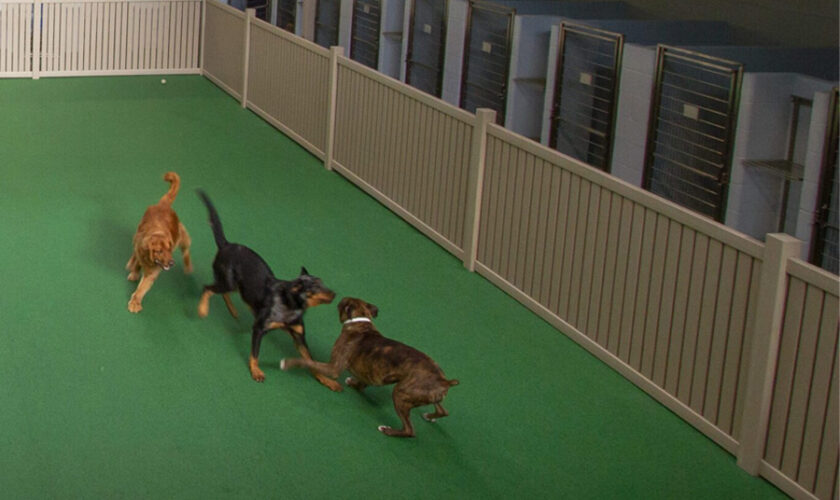Veterinary visits can be a stressful experience for pets and their owners alike. From unfamiliar smells and strange surroundings to the sound of barking dogs or meowing cats, even the most routine appointment can trigger anxiety in animals. For veterinary professionals who are passionate about improving the well-being of every animal in their care, it’s important to understand how the built environment plays a role in reducing that stress. With thoughtful renovations, clinics can become safer, more serene, and more accommodating spaces for all species.
A great place to begin is by rethinking your overall layout. Many older clinics were not designed with modern animal behavior research in mind. As a result, they often feature cramped waiting rooms, limited separation between species, and acoustics that amplify rather than minimize noise. These elements can contribute to heightened anxiety, especially when unfamiliar animals are forced into close quarters.
To resolve these issues, consider a full redesign that focuses on species separation and smooth movement throughout the facility. For example, creating separate entrances for cats and dogs can help reduce interspecies tension. Felines tend to become distressed by loud sounds and unfamiliar scents, while canines may become overstimulated by other pets. Strategically designed vestibules with double doors and private entry areas allow for more controlled access, giving both pets and owners the space they need to feel secure. These features are already a common component in modern pet boarding facility construction and can easily be adapted for use in veterinary practices.
Beyond traffic flow, consider implementing private exam rooms and designated quiet zones. These can serve as safe spaces for anxious animals and reduce the likelihood of aggressive encounters. Additionally, semi-enclosed or staggered seating arrangements in waiting areas can offer pets a visual barrier from each other. Built-in benches instead of loose chairs can eliminate issues with tangled leashes or awkward pet-owner maneuvering, and they also tend to be easier to keep clean and disinfected.
Flooring is another essential element in reducing pet stress. Slippery tile can lead to injury or fear-based hesitation when walking, especially for older pets or those recovering from surgery. Installing non-slip, pet-friendly surfaces throughout the facility provides more stability and can help pets feel more confident as they walk. Materials that are durable, water-resistant, and scratch-proof are ideal, as they withstand the daily wear and tear of a busy clinic environment.
The sensory experience inside the clinic also makes a significant difference. Harsh fluorescent lighting may seem clinical and sterile to humans, but it can be disorienting and unpleasant for animals. By opting for dimmable LED lighting, you can create a more soothing ambiance. Natural light, when used wisely, also has a calming effect. However, it’s important to avoid placing windows where pets can see others arriving or being carried in, as this might increase stress levels rather than reduce them.
Color psychology is another powerful, yet often overlooked, aspect of veterinary clinic design. Recent studies suggest that pets respond to certain colors in ways that affect their mood. Soothing tones such as pastel blue, lavender, or soft green can foster a sense of calm. On the other hand, bright reds and stark whites might inadvertently cause agitation or overstimulation. Avoid overly clinical colors like mint green, which may remind owners of sterile medical environments.
Soundproofing is yet another upgrade that can significantly reduce anxiety for animals. Loud barks or sudden noises can trigger a stress response, especially in cats and smaller dogs. Acoustic panels, white noise machines, and sound-dampening materials used in walls and ceilings can go a long way in maintaining a peaceful atmosphere.
While the idea of renovating a functioning veterinary clinic might sound overwhelming, it’s important to remember that these changes can be implemented in phases. With careful planning, you can limit disruptions to daily operations and continue providing exceptional care throughout the construction process. Modular renovation schedules, after-hours work, and portable treatment setups are all viable solutions for clinics committed to a more animal-friendly environment.
At the end of the day, a thoughtfully renovated veterinary clinic benefits more than just the animals. Pet owners will notice and appreciate a calmer, cleaner, and more welcoming space. Staff morale may also improve when working in an environment specifically designed for safety and serenity. Whether you’re undergoing a complete transformation or simply upgrading key elements, investing in renovations that prioritize comfort and well-being makes a long-term difference for everyone who walks—or trots—through your doors.

